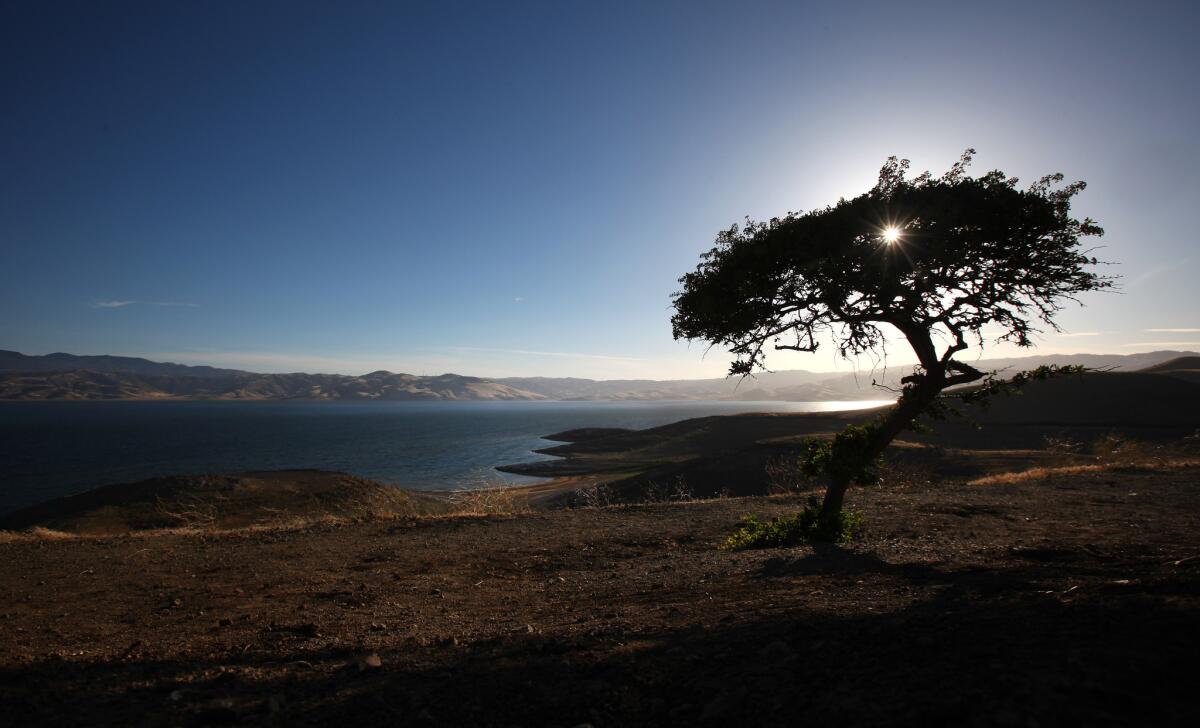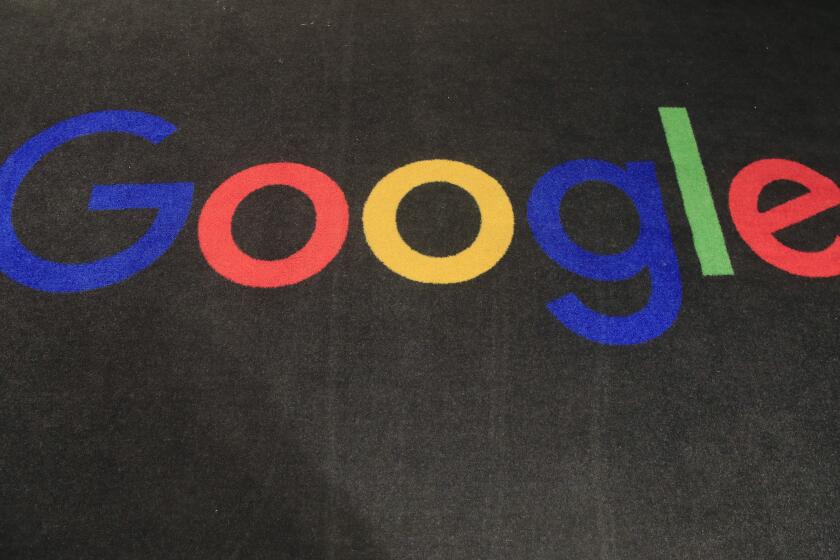A huge water district defends a secret handout

San Luis Reservoir, which supplies water to Westlands Water District.
- Share via
The Westlands Water District, which reached a legal settlement with the federal government earlier this month after months of confidential negotiations, takes issue with my description of the deal as a secret arrangement that guarantees the district a permanent water supply while hamstringing policy-makers’ ability to plan for drought and climate change.
In a letter to the editor published Tuesday in The Times, Westlands President Don Peracchi says the deal wasn’t “secret” and doesn’t immunize Westlands--the largest public water district in the country--from cutbacks. In fact, he says, the deal “reduces the government’s obligation to Westlands by 25%, even in wet years when full allocations will be available to other contractors.”
Let’s take a closer look at Peracchi’s defense.
First, was this deal, which settled lawsuits being overseen by a federal court in Sacramento, a “secret”? Peracchi writes: “The federal district court, Congress and interested nongovernmental organizations were regularly updated on the status of negotiations, and the terms of a potential settlement were shared in December 2013.”
This is true as far as it goes, but it doesn’t tell the whole story. The fact is that members of Congress and environmental organizations received updates on general principles, not on the actual terms being negotiated.
We know this because when the actual settlement terms were filed with the court on September 16, one major provision was brand new to all onlookers. This was a provision turning over what could be hundreds of millions of dollars’ worth of federally funded water infrastructure to the district, without compensation or even a formal appraisal.
In any case, there’s a big difference between revealing the principles underlying interim talks, and the specific terms being discussed. If they were identical, Westlands and the government could have signed the deal in December 2013. A lot more was worked out after that--behind closed doors.
Peracchi says “Westlands is not immunized from cutbacks; the government may still impose environmental or drought restrictions as before.”
This is true, but misleading. Nothing prevents the government from cutting back Westlands’ water supply when the water isn’t there, because of drought or other restrictions. The question is what will happen when there is water, but government planners decide there are better uses for it than watering the almond or pistachio trees of Westlands farmers.
In that event, the planners have to stand down; under the deal’s terms, they can’t divert water from Westlands to some other, potentially more beneficial, use. That’s a hugely valuable benefit for Westlands and yes, an important “immunization.” And it’s almost never granted. For Westlands, it’s permanent, lasting from now to the end of recorded time.
Finally, while it’s true that the government’s guarantee of water for Westlands is reduced in the settlement from about 1.2 million acre-feet a year to about 895,000 acre-feet--a 25% cut--but most of the difference is mythical, “paper water” in the jargon of environmental experts. Because of drought, climate change, and competing water rights, Westlands’ own projections were that its guaranteed supply from the government would average only about 500,000 acre-feet a year in the future. Giving up the putative rights to some 300,000 acre-feet a year it wasn’t going to get anyway isn’t much of a sacrifice.
Peracchi’s defense doesn’t change the bottom line of this deal for the public: it’s a boon for Westlands, at the expense of suitable planning for a future water supply in California that will be much different from the past. Protecting Westlands behind an insurmountable wall is the wrong deal, and the fact that public advocates were largely excluded from the negotiations doesn’t make it any better. What we said in our original analysis still applies: Congress should reject it.
Keep up to date with the Economy Hub. Follow @hiltzikm on Twitter, see our Facebook page, or email michael.hiltzik@latimes.com.
More to Read
Inside the business of entertainment
The Wide Shot brings you news, analysis and insights on everything from streaming wars to production — and what it all means for the future.
You may occasionally receive promotional content from the Los Angeles Times.











